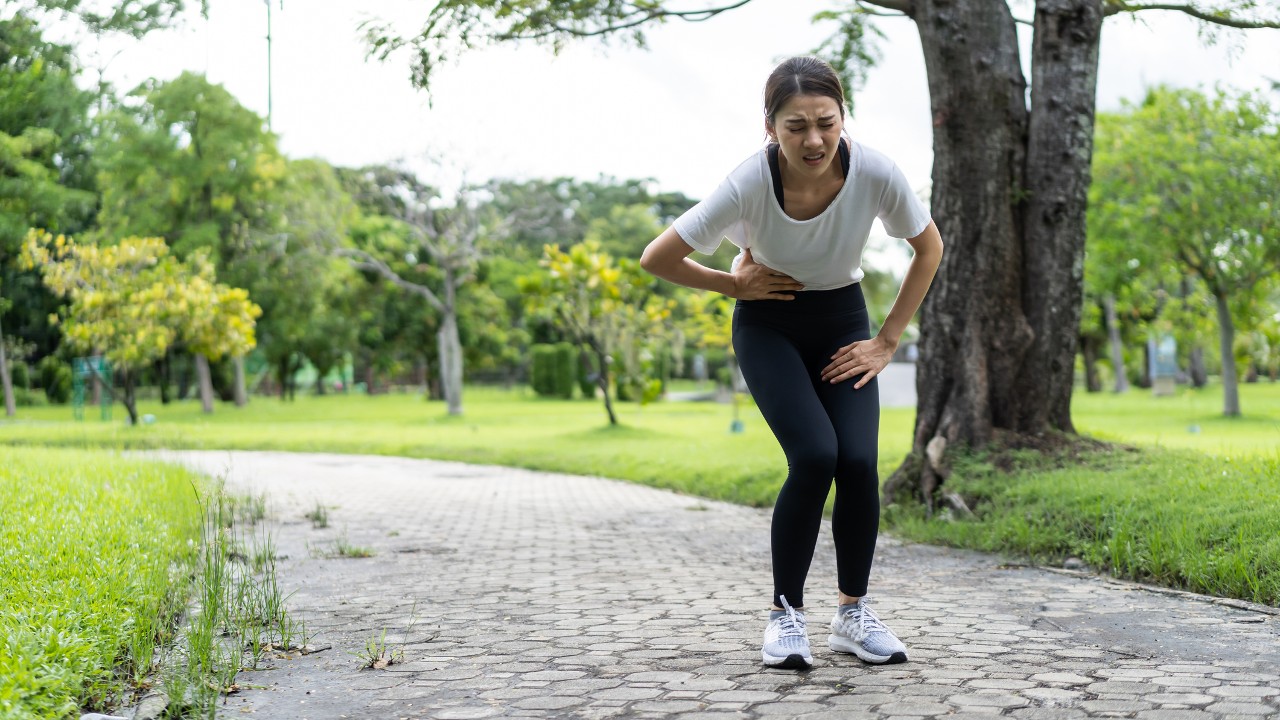What To Do If You Get A Side Stitch When Running
An expert explains what probably causes side stitches when running, how to prevent them and strategies for getting rid of them

While stitches are not a major problem like running injuries such as plantar fasciitis or achilles tendonitis, they are an annoyance that pretty much every runner has suffered, and they can derail training runs and races.
To find out more about what causes a stitch when running and how you can prevent them, we spoke to Dr Rebecca Robinson, sport and exercise consultant at CHHP London.
What is a side stitch?
Usually it’s a pain specific to the area just under the ribs and it tends to be on one side or the other. If you’re unfortunate it might be both sides at once. It’s usually in the area around the diaphragm, but the diaphragm nerves radiate to the shoulder, so sometimes people get pain that goes up into the shoulder.
What causes a side stitch when running?
We don’t quite know is the honest way to start. What we think it can be is a lack of blood supply to the diaphragm, which is the muscle under our ribs that goes down when we breathe in. It is above the liver on the right side and the stomach on the left side. Sometimes if people have eaten a relatively heavy meal that is hard to digest, the blood supply changes so it can cause a bit of strain around that area.
We’ve also got this thing called the peritoneum, which is a lining around our stomachs. It’s like a corset around your abdomen, and that may just get a little stretched.
The other thing is breathing patterns. If people haven’t got a regular rhythm, that can tighten the muscles as well.
How do you prevent side stitches?
The timing of eating before your run might help. Try not to go hungry, but make sure that any larger amounts of foods are eaten a good couple of hours before exercise. I think we’ve all probably precipitated a stitch at some point when you’re hungry but really want to run and you just grab something like a slice of toast before going out the door – that doesn’t give enough time to digest.
If it’s happening in a race, there is evidence that you get a nervous tummy ahead of something like that, so things that you normally digest well can cause a flare-up and you get something like a stitch or an upset tummy.
If that’s the case, taking something like an isotonic gel is much more likely to be palatable. If you’re doing something like a marathon and using gels, practising can help your body to get used to that.
Working on your breathing can be good too. Slowing down your breathing and trying to get into a rhythmic breathing pattern. Just breathing out as the foot hits the ground can really help.
The main theories are around the diaphragm and the lining of the tummy, but some people do think that thoracic and other spinal tightness could be a factor as well. Focus on good posture when running, especially around the upper chest. When we’re sitting at a desk our upper chest muscles can become super-tight. If we suddenly go out for a run, it can be harder to get a good breath in and good posture can help.
How do you get rid of side stitches when they do happen? Should you stop?
It’s not a harmful thing itself, which is a good thing – if someone’s doing a race, stopping might not be an option – but sometimes when you run through a stitch it can be sore the next day.
Some people find that gentle pressure on the area can help. It’s very tempting to press on the area but don’t press hard on it. Stopping can help you get back into rhythmic breathing and very gently massaging the muscles around the lower chest and upper tummy can help.
Rebecca Robinson is a consultant in sport and exercise medicine at CHHP, a sports and physiotherapy clinic. Robinson graduated from Newcastle University and went on to train in both hospital medicine and sport and exercise medicine. Her current clinical work covers musculoskeletal medicine, sport and exercise medicine for elite athletes, and event medicine. Robinson is also an accomplished athlete, competing in international mountain running and road running events.
Get the Coach Newsletter
Sign up for workout ideas, training advice, reviews of the latest gear and more.

Nick Harris-Fry is a journalist who has been covering health and fitness since 2015. Nick is an avid runner, covering 70-110km a week, which gives him ample opportunity to test a wide range of running shoes and running gear. He is also the chief tester for fitness trackers and running watches, treadmills and exercise bikes, and workout headphones.









